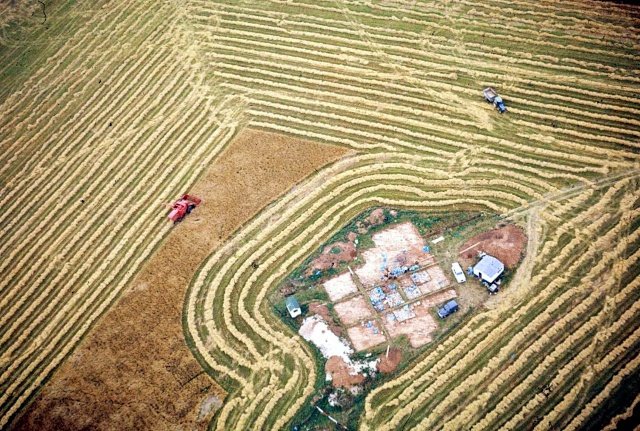
Contents
Introduction Max Dacre and The Andover Archaeological Society
PART ONE THE PREHISTORY OF THE ANTON BASIN
Bronze Age sites
1 Kimpton Barrows
2 Kalis Corner
Iron Age settlements
1 Blendon Drive and Charlton Hill
2 High View
3 Knights Enham
4 Portway Ditches
5 Spine Road (Churchill Way)
6 Vigo Road
General discussion
PART TWO THE ROMANO-BRITISH PERIOD
1 Redenham Shrine
2 Kimpton Roman Farm
3 East Anton
PART THREE THE ANGLO-SAXON PERIOD
Charlton Link Road and Armstrong Rise
PART FOUR MINOR SITES
1 Dances Land
2 Devil's Ditch
3 Kimpton Saxon sites
4 Littleton Manor House
5 Kimpton Manor Farm
6 Newbury Street
7 Abbotts Ann
CONCLUSIONS
Appendix: Site, publication and archive details
Index
£20.00 (paper) December 2013
246x189 mm 128pp 51 line illustrations, 60 colour plates
978-1-903152-32-4
from Julian Richards' Foreword
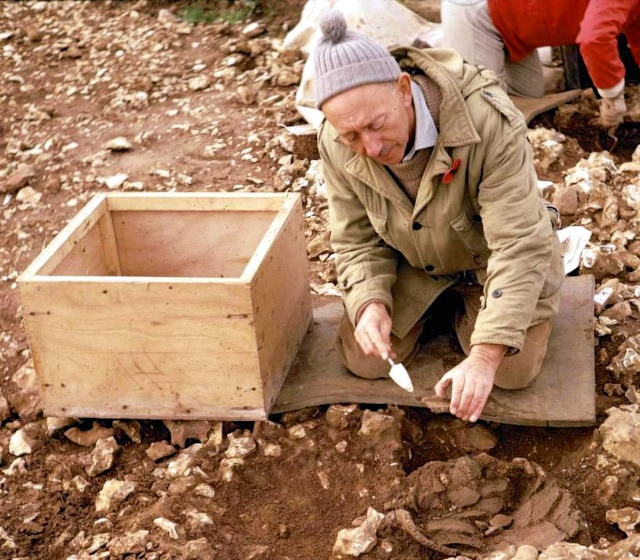 In the 1980s I was lucky enough to enjoy the legendary Dacre hospitality and, in more recent years, honoured to deliver the Andover Archaeological Society's Dacre memorial lecture. I was consequently very glad to accept the invitation to contribute a foreword to this volume.
In the 1980s I was lucky enough to enjoy the legendary Dacre hospitality and, in more recent years, honoured to deliver the Andover Archaeological Society's Dacre memorial lecture. I was consequently very glad to accept the invitation to contribute a foreword to this volume.
This is a welcome volume - not only as a valuable addition to the published record of the archaeology of the Andover area, but also as a celebration of the achievements of the Andover Archaeological Society and of its best loved member, Max Dacre (right). Max was always a firm believer in ‘spreading the word', talking to local groups or schools about the discoveries made in and around their town. And this volume continues to ‘spread the word', finally bringing those same discoveries, that help to illuminate 3000 years of Andover's past, to a new and wider audience.
The 25 years that are spanned by the excavations reported in this volume saw radical changes in the organisation and funding of archaeology. The earliest of the excavations took place during archaeology's ‘rescue' years, 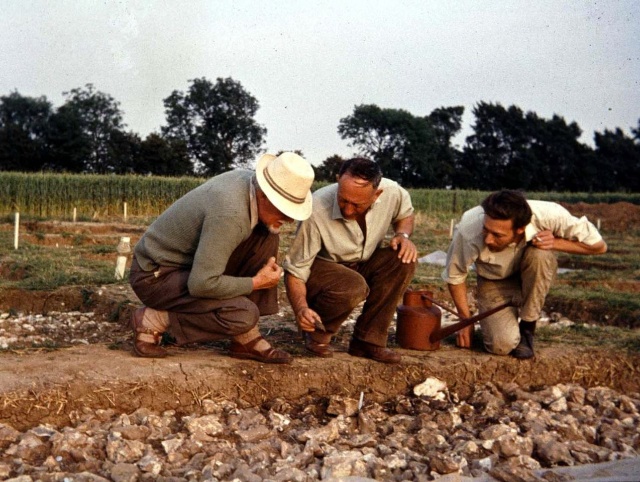 long before planning guidelines obliged builder and developers not only to provide access to sites but also to fund their excavation and publication. In these early years passion, enthusiasm and energy, often in the face of difficult circumstances, are what dug the sites and gathered the raw data that forms the backbone of this volume. The number and range of sites is impressive, shedding light on settlement and broader issues of land use as well as bringing us face to face with some of our ancient ancestors. What emerges from this amazing catalogue of sites is a richer history of the Andover area, from the Bronze Age to the Anglo-Saxon period.
long before planning guidelines obliged builder and developers not only to provide access to sites but also to fund their excavation and publication. In these early years passion, enthusiasm and energy, often in the face of difficult circumstances, are what dug the sites and gathered the raw data that forms the backbone of this volume. The number and range of sites is impressive, shedding light on settlement and broader issues of land use as well as bringing us face to face with some of our ancient ancestors. What emerges from this amazing catalogue of sites is a richer history of the Andover area, from the Bronze Age to the Anglo-Saxon period.
It is now to the great credit of Nick Stoodley and the specialists that have worked on the excavated material, as well as those who facilitated and funded this work. That not only are the individual sites now published, but that their contribution to a wider and far more important picture are also explored.
This is the volume that Max would have wanted.
extract from Nick Stoodley's Introduction
Max Dacre and the Andover Archaeological Society
The various archaeological projects described in this report resulted from research and rescue excavations that took place in the Andover area over more than two decades from the mid-1960s to the late-1980s. The redevelopment of Andover and the need to accommodate overspill from London was resulting in the destruction of the area's archaeological heritage. Without adequate legislation archaeological sites were being destroyed without record. It was down to a local group, the Andover Archaeological Society (hereafter AAS), to step in and salvage the evidence, often in very inhospitable conditions and usually working alongside the builders.
Archaeology in Andover, prior to the ‘overspill' redevelopment in the early 1960s, was limited to random coin finds and discoveries during building work. The former mayor and town character, Martin Loveridge, was the person to whom people handed their finds, but it is not known what happened to his collection following his death. Probably the most significant of the discoveries resulted from alterations to the Kings Head pub and the building of the former Savoy cinema, which revealed a Roman hypocaust. Close by, a cluster of Roman silver coins was reported from the allotments on the south side of Hedge End Road. Potentially the most important building site of all was the large Iron Age/Romano-British settlement site at Blendon Drive. It was not reported at the time, and only came to light when one of the new bungalows was purchased by a member of the AAS, and Max Dacre was able to do some work in the garden in 1964. It was claimed that a possible Romano-Celtic temple was visible here, on a now untraceable aerial photograph.
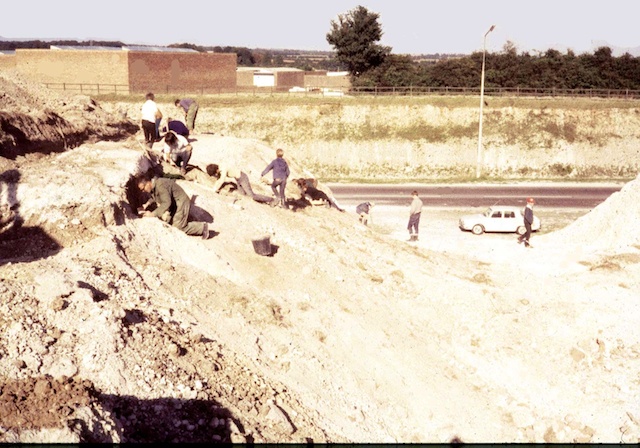 The origins of the AAS can be traced back to 1964 and the rescue operations at the site of the Iron Age settlement at Spine Road (Churchill Way). Miss Margaret McFarlane of the Willis Museum (Basingstoke) was informed about the destruction of archaeological remains during the construction of the Andover ring road, which involved a deep cutting by earth-moving machinery. Along with Mary Oliver she was granted permission to undertake observation and recording of the evidence and managed to salvage a small assemblage of pottery, burnt grain, etc. For five days this pair of professional archaeologists guided a completely inexperienced group of local volunteers, which included school children, to collect as much information as possible. Incidentally, Dacre had only been in the town for one day when he witnessed the volunteers rushing amongst the workmen and their machinery to retrieve artefacts, while Margaret and Mary endeavoured to record the evidence before it was removed. The contractors worked around the corn drier which now sat on an apparently ‘rising' block of chalk. One of the few cases of archaeologists having to climb up a ladder to excavate! The finds obtained, including a complete Roman vessel now on show in the Andover Museum, but initially went to Basingstoke Museum.
The origins of the AAS can be traced back to 1964 and the rescue operations at the site of the Iron Age settlement at Spine Road (Churchill Way). Miss Margaret McFarlane of the Willis Museum (Basingstoke) was informed about the destruction of archaeological remains during the construction of the Andover ring road, which involved a deep cutting by earth-moving machinery. Along with Mary Oliver she was granted permission to undertake observation and recording of the evidence and managed to salvage a small assemblage of pottery, burnt grain, etc. For five days this pair of professional archaeologists guided a completely inexperienced group of local volunteers, which included school children, to collect as much information as possible. Incidentally, Dacre had only been in the town for one day when he witnessed the volunteers rushing amongst the workmen and their machinery to retrieve artefacts, while Margaret and Mary endeavoured to record the evidence before it was removed. The contractors worked around the corn drier which now sat on an apparently ‘rising' block of chalk. One of the few cases of archaeologists having to climb up a ladder to excavate! The finds obtained, including a complete Roman vessel now on show in the Andover Museum, but initially went to Basingstoke Museum.
The uproar that had resulted from the destruction of the Spine Road site and the obvious need for some archaeological cover led to an appeal to form a Society. One of the prime movers was Vic Emery, a long established builder based at Savoy Chambers, another was Major Hugh Baker. It is believed that the help of 140 volunteers was enlisted, of which the majority were older school children. One of the first tasks was to instruct the young workforce in the fundamentals of archaeological excavation: a training dig was held on land at Walworth Estate adjacent to Spine Road and for which a low-level aerial photo, obtained from an Army Air Corps pilot, appeared to show ‘features' in the field. To direct the excavation, an Royal Army Medical Corps corporal claiming excavation experience in the Naples area was chosen. 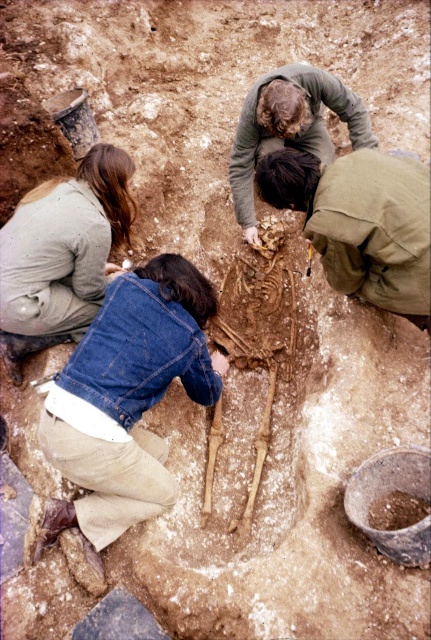 The training dig consisted of the excavation of a number of trenches, but each was devoid of archaeology and the youngsters soon tired of digging sterile ground in inclement weather. When their supervisors were absent, they scaled the carefully graded side of the road cutting and began to investigate the remains of a Roman building still visible from the previous year. A large quantity of pottery was recovered but this unauthorised action caused much embarrassment and the damage to the road cutting had to be put right. A flavour of the event can be obtained from the Andover Advertiser, which listed the tasks undertaken by members i.e. ‘2nd small finds assistant' etc. Unfortunately, despite opening a number of trenches and squares, no finds at all were found. As the excavation was closing, Roman finds were found in a small area between the road and the cutting (for more detail see the Spring 1966 AAS Journal).
The training dig consisted of the excavation of a number of trenches, but each was devoid of archaeology and the youngsters soon tired of digging sterile ground in inclement weather. When their supervisors were absent, they scaled the carefully graded side of the road cutting and began to investigate the remains of a Roman building still visible from the previous year. A large quantity of pottery was recovered but this unauthorised action caused much embarrassment and the damage to the road cutting had to be put right. A flavour of the event can be obtained from the Andover Advertiser, which listed the tasks undertaken by members i.e. ‘2nd small finds assistant' etc. Unfortunately, despite opening a number of trenches and squares, no finds at all were found. As the excavation was closing, Roman finds were found in a small area between the road and the cutting (for more detail see the Spring 1966 AAS Journal).
Following this initial training excavation, Dacre was appointed director of the Society. Although Max had an interest in ancient civilizations, and could claim an archaeological background from his pre-war life, he had no great desire to direct an excavation. 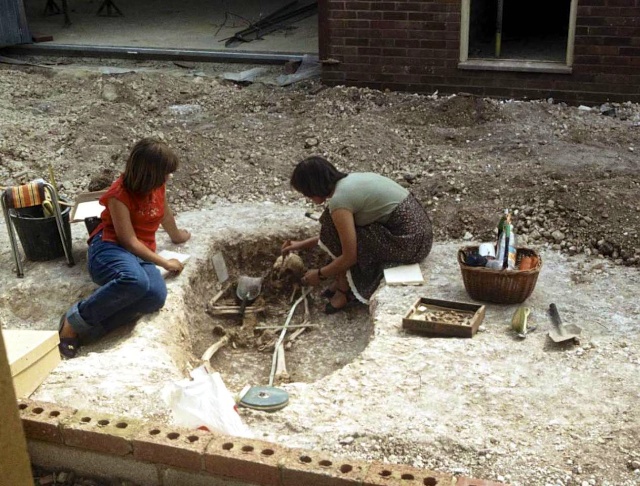 During these early years, the Society did undertake several small-scale excavations but they were hindered by their general inexperience and lack of recognition by the archaeological profession. The turning point came with the successful excavation of the nationally important Bronze Age cremation cemetery at Kalis Corner (1966-70) (Dacre & Ellison 1981). This project can be seen as marking the transition of the AAS from a largely passive and poorly structured organisation to a smaller, efficient and more experienced outfit. The careful and scientific manner in which the site was excavated brought them to the attention of both the public and the wider archaeological community. Over the next two decades the AAS investigated a range of sites most of which were in the Anton Basin. Many of these involved direct intervention and the salvaging of evidence that would have been destroyed without record. Not all, however, were victims of urban growth; Dacre was acutely aware of the damage being done by modern agricultural practices and evidence at several important rural sites was saved by the intervention of the AAS and the cooperation of local farmers.
During these early years, the Society did undertake several small-scale excavations but they were hindered by their general inexperience and lack of recognition by the archaeological profession. The turning point came with the successful excavation of the nationally important Bronze Age cremation cemetery at Kalis Corner (1966-70) (Dacre & Ellison 1981). This project can be seen as marking the transition of the AAS from a largely passive and poorly structured organisation to a smaller, efficient and more experienced outfit. The careful and scientific manner in which the site was excavated brought them to the attention of both the public and the wider archaeological community. Over the next two decades the AAS investigated a range of sites most of which were in the Anton Basin. Many of these involved direct intervention and the salvaging of evidence that would have been destroyed without record. Not all, however, were victims of urban growth; Dacre was acutely aware of the damage being done by modern agricultural practices and evidence at several important rural sites was saved by the intervention of the AAS and the cooperation of local farmers.
Dacre was planning to publish the majority of the sites in a single monograph on the archaeology of the Anton Basin. Its aim was to show a pattern of prehistoric farming based on the river system and the topography and where all suitable land was exploited. Unfortunately Max Dacre's untimely death prevented it from happening. 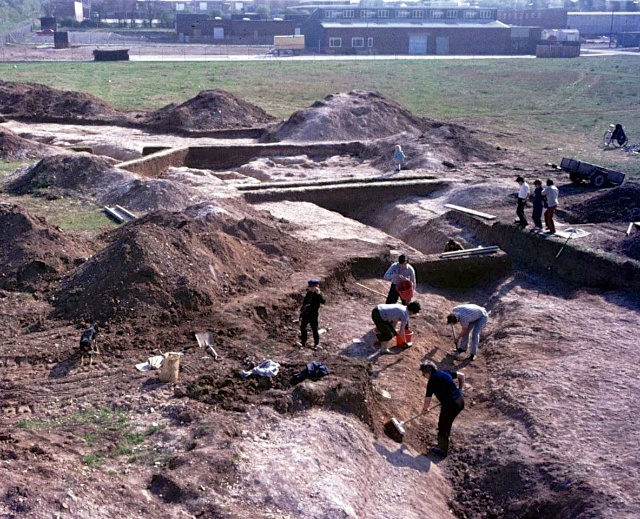 The excavation archive was sent to Wessex Archaeology (Salisbury) where an assessment was made and an application for a grant was submitted to English Heritage to publish the monograph posthumously. Unfortunately, this was unsuccessful and the planned publication had to be abandoned. The archive was accepted by Hampshire County Council Museums Service where it is now stored.
The excavation archive was sent to Wessex Archaeology (Salisbury) where an assessment was made and an application for a grant was submitted to English Heritage to publish the monograph posthumously. Unfortunately, this was unsuccessful and the planned publication had to be abandoned. The archive was accepted by Hampshire County Council Museums Service where it is now stored.
Some of the 111 images from The Archaeology of Andover
- Aerial view of excavations at Kalis Corner
- Max Dacre excavating at Kalis Corner
- Max and fellow archaeologists studying pottery at Kalis Corner
- Spine Road. Road cutting and the volunteers
- Excavation of Anglo-Saxon grave at Portway East Industrial Estate
- Excavation of Anglo-Saxon grave at Portway West Industrial Estate
- Excavation of Portway linear ditches
All images: Hampshire County Museums